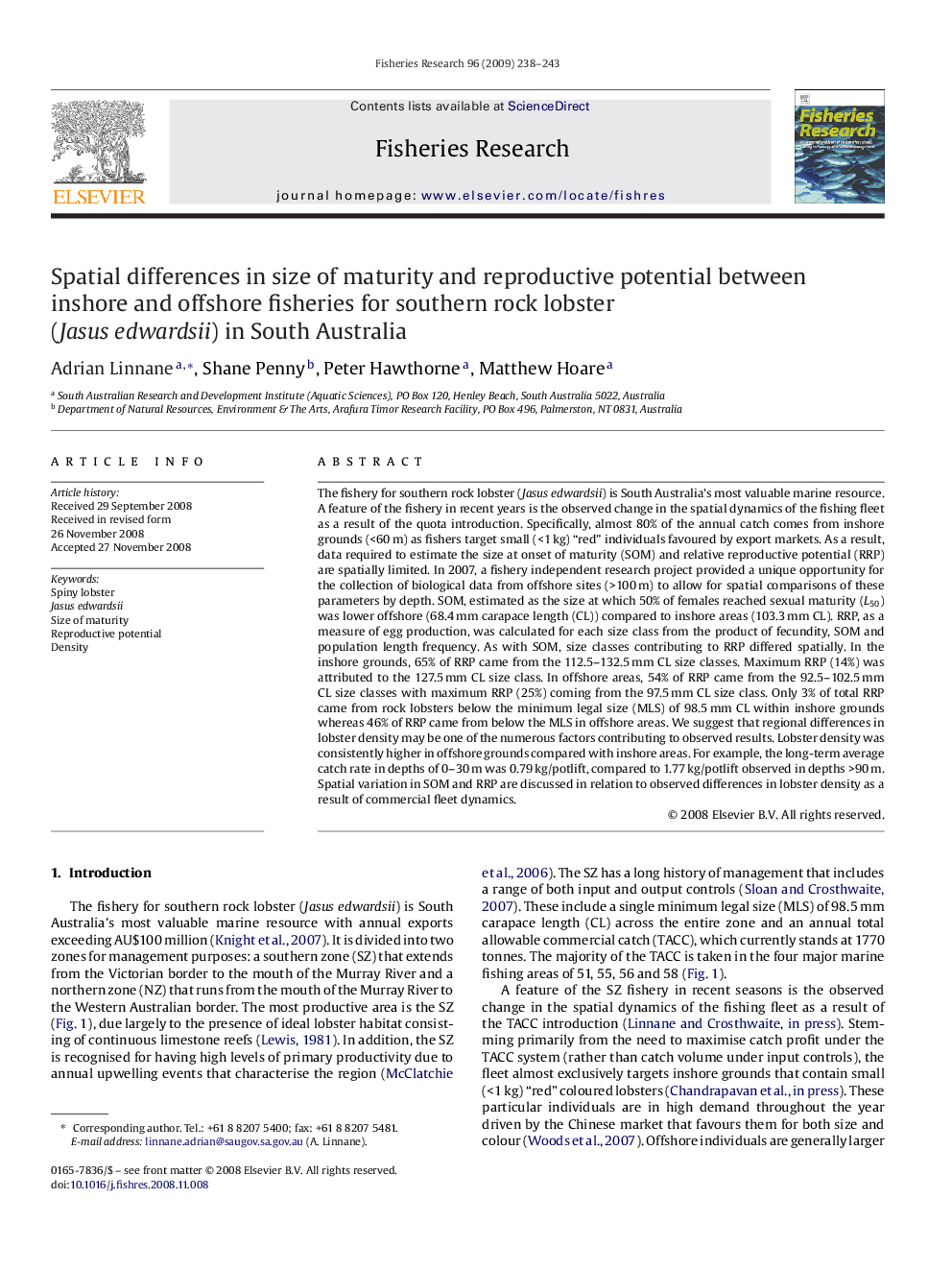| کد مقاله | کد نشریه | سال انتشار | مقاله انگلیسی | نسخه تمام متن |
|---|---|---|---|---|
| 4544346 | 1626856 | 2009 | 6 صفحه PDF | دانلود رایگان |

The fishery for southern rock lobster (Jasus edwardsii) is South Australia's most valuable marine resource. A feature of the fishery in recent years is the observed change in the spatial dynamics of the fishing fleet as a result of the quota introduction. Specifically, almost 80% of the annual catch comes from inshore grounds (<60 m) as fishers target small (<1 kg) “red” individuals favoured by export markets. As a result, data required to estimate the size at onset of maturity (SOM) and relative reproductive potential (RRP) are spatially limited. In 2007, a fishery independent research project provided a unique opportunity for the collection of biological data from offshore sites (>100 m) to allow for spatial comparisons of these parameters by depth. SOM, estimated as the size at which 50% of females reached sexual maturity (L50) was lower offshore (68.4 mm carapace length (CL)) compared to inshore areas (103.3 mm CL). RRP, as a measure of egg production, was calculated for each size class from the product of fecundity, SOM and population length frequency. As with SOM, size classes contributing to RRP differed spatially. In the inshore grounds, 65% of RRP came from the 112.5–132.5 mm CL size classes. Maximum RRP (14%) was attributed to the 127.5 mm CL size class. In offshore areas, 54% of RRP came from the 92.5–102.5 mm CL size classes with maximum RRP (25%) coming from the 97.5 mm CL size class. Only 3% of total RRP came from rock lobsters below the minimum legal size (MLS) of 98.5 mm CL within inshore grounds whereas 46% of RRP came from below the MLS in offshore areas. We suggest that regional differences in lobster density may be one of the numerous factors contributing to observed results. Lobster density was consistently higher in offshore grounds compared with inshore areas. For example, the long-term average catch rate in depths of 0–30 m was 0.79 kg/potlift, compared to 1.77 kg/potlift observed in depths >90 m. Spatial variation in SOM and RRP are discussed in relation to observed differences in lobster density as a result of commercial fleet dynamics.
Journal: Fisheries Research - Volume 96, Issues 2–3, March 2009, Pages 238–243